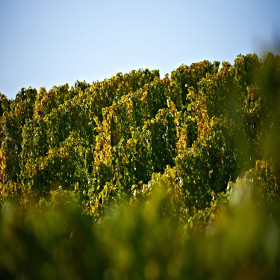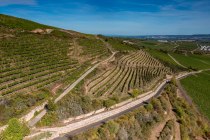Winery Riffel GbR
At Binger Rochusberg in northwestern Rheinhessen, Erik and Carolin Riffel cultivate 16 ha of vineyards, 5.5 of them in the single vineyard Binger Scharlachberg.
Geologically, the Rochusberg belongs to a mighty quartzite bar, which extends from the Taunus to parts of the Hunsrück. On this gift of nature, the Riffel family produces fascinating wines. The focus is on Riesling, Silvaner and Pinot Blanc. Since 2009 we are organially managed, with the 2012 vintage we are ECOVIN - BIO certified!
The range includes clear estate wines characterized by fresh fruit, elegant, finesse-rich, fascinating village wines and the single vineyard wines - wines with much structure and inner tension. A sense of tradition combined with the joy of innovation and cosmopolitanism leads to these expressive wines. 90% of the wines are spontaneously fermented, followed by some time on the lees.
Tasting and event rooms in the Mediterranean style invite you to try. At the top, a small, cozy tower room from which you can let your gaze wander over Büdesheim and the vineyard site Scharlachberg. The very attractively designed courtyard offers space for the annual court festival in July.
Main grape varieties:
Riesling, Sylvaner, Pinot Blanc and Pinot Noir
English speaking visitors are welcome.







